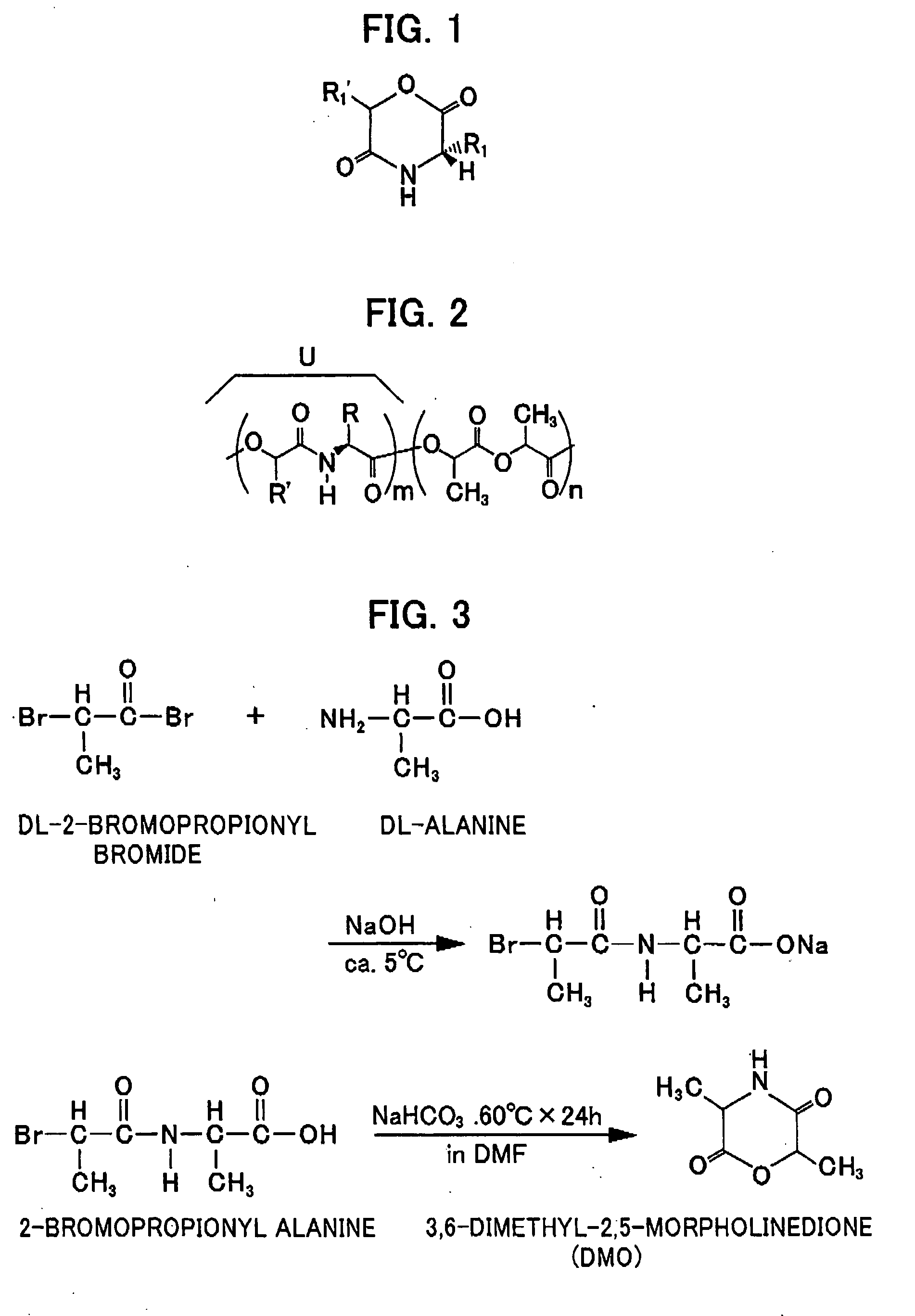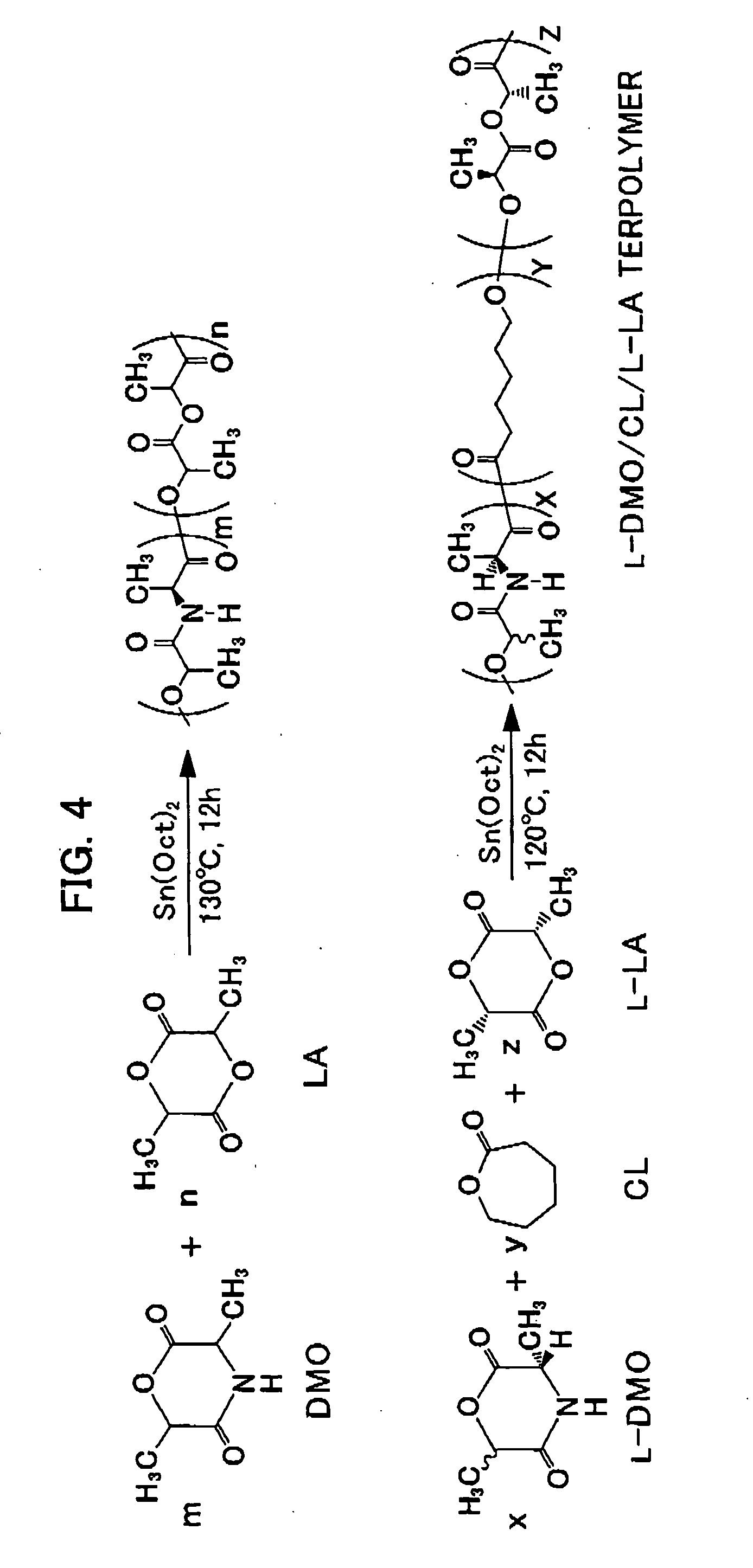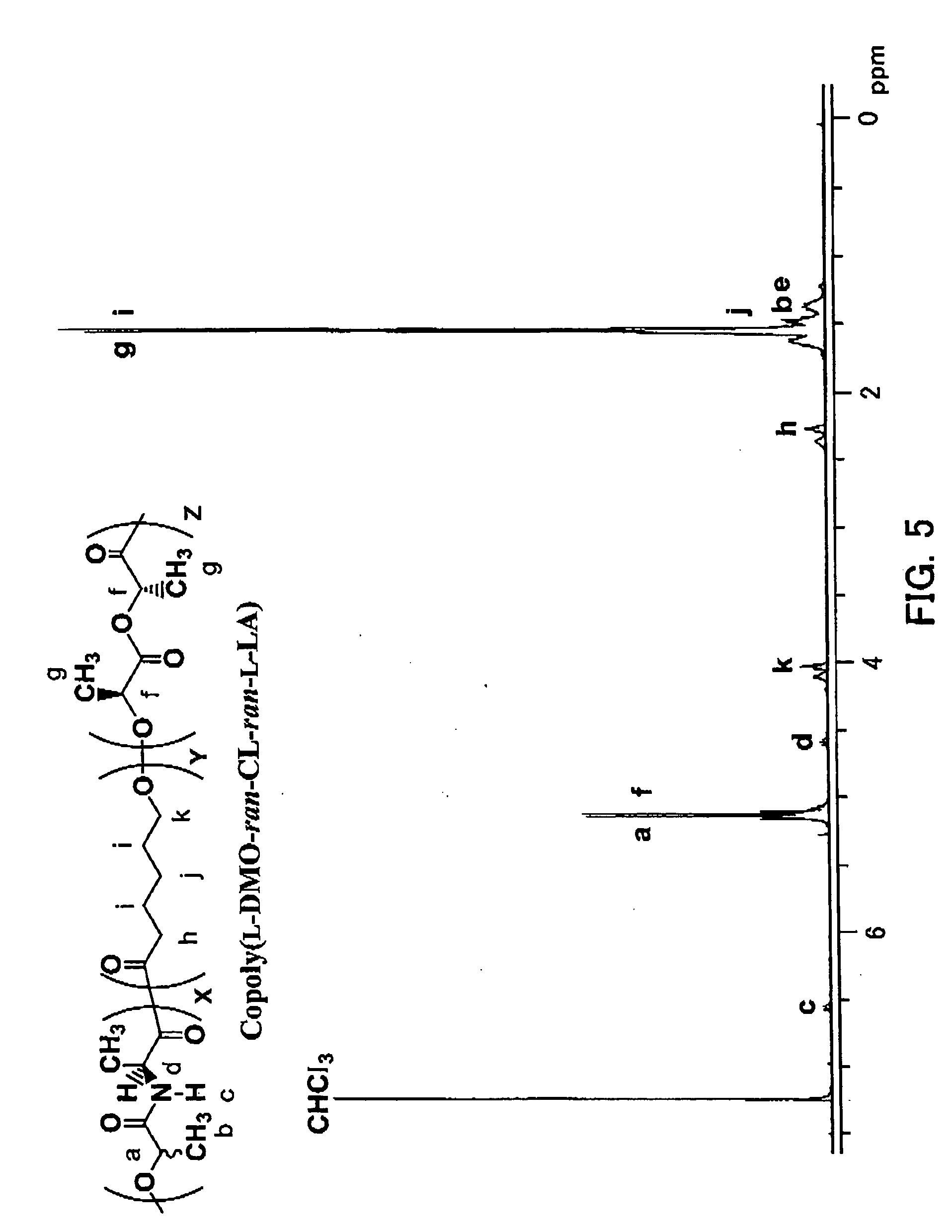Biodegradable bio-absorbable material for clinical practice
- Summary
- Abstract
- Description
- Claims
- Application Information
AI Technical Summary
Benefits of technology
Problems solved by technology
Method used
Image
Examples
examples
[0015] So as to describe the invention in more detail, the invention is now described with reference to the attached drawings.
[0016] The structure of the depsipeptide is shown in FIG. 1.
[0017] As shown in the figure, the R group in a side chain is a C1-4 alkyl group, while the R′ group in a side chain is a C1-2 alkyl group.
[0018] Concerning examples of the depsipeptide, depsipeptides are synthesized from amino acid and a hydroxylate derivative, using chloroacetyl chloride, 2-bromopropionyl bromide and 2-bromo-n-butyryl bromide are as the hydroxylate derivative to prepare depsipeptides, namely L-MMO, L-DMO, and L-MEMO, in the order of the hydroxylate derivatives. All of them are applicable to the invention. The enzymatic degradation level of a copolymer from such depsipeptide monomer and a bio-absorbable polymer ε-caprolactone (CL) with proteinase K is in the order of L-MMO / CL>L-DMO / CL>L-MEMO / CL.
[0019] As to the depsipeptide synthesized from amino acid and an oxyacid derivative, ...
PUM
| Property | Measurement | Unit |
|---|---|---|
| Molecular weight | aaaaa | aaaaa |
| Mechanical properties | aaaaa | aaaaa |
| Thermal resistance | aaaaa | aaaaa |
Abstract
Description
Claims
Application Information
 Login to View More
Login to View More - R&D
- Intellectual Property
- Life Sciences
- Materials
- Tech Scout
- Unparalleled Data Quality
- Higher Quality Content
- 60% Fewer Hallucinations
Browse by: Latest US Patents, China's latest patents, Technical Efficacy Thesaurus, Application Domain, Technology Topic, Popular Technical Reports.
© 2025 PatSnap. All rights reserved.Legal|Privacy policy|Modern Slavery Act Transparency Statement|Sitemap|About US| Contact US: help@patsnap.com



